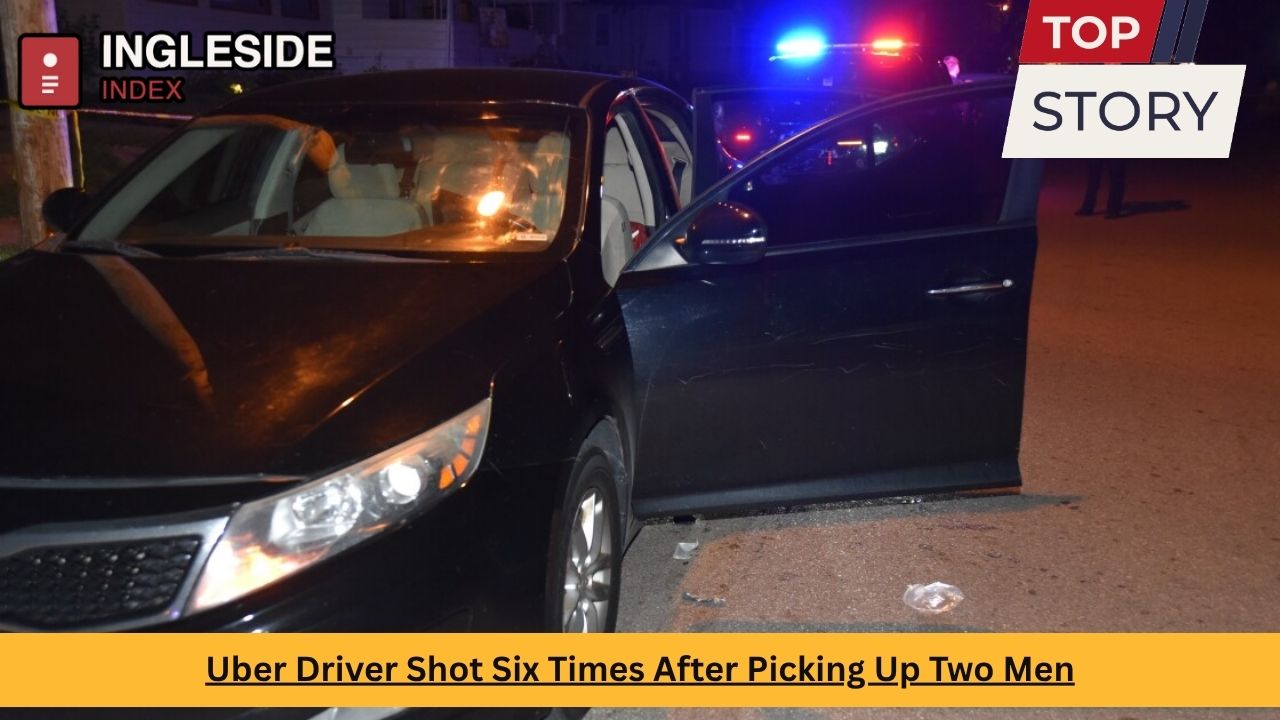Akron, Ohio: In the quiet city of Akron, Ohio, a devastating act of violence shocked the community and reignited critical discussions about rideshare safety for drivers and passengers. This comprehensive look at the incident, its context, and broader implications provides essential facts, first-person accounts, and actionable insights to better understand the realities faced by those working in on-demand transportation.
The Incident: A Shocking Night in Akron
Routine Ride Turns Violent
Late one evening in Akron’s Goodyear Heights neighborhood, a 39-year-old Uber driver from Bedford, Ohio, accepted a ride request from two men. Within minutes of picking them up in her Kia Optima, the ride turned deadly. One passenger opened fire inside the vehicle, hitting the driver six times.
Emergency Response
Despite her injuries, the driver heroically managed to call 911. Police arrived around 9:30 p.m. on Sanford Avenue and quickly secured the scene. She was transported to Summa Health Akron City Hospital, where she is currently recovering.
The Victim: Bravery and Survival
Her Condition and Recovery
The driver survived six gunshot wounds and is now recovering in the hospital with her family at her side. Authorities have kept her identity confidential for safety reasons. Her ability to remain calm and call for help under extreme duress has been praised by responders and medical staff alike.
Community Support
Community members and fellow rideshare drivers have expressed solidarity, offering emotional and financial support as she recovers.
The Investigation: Piecing Together What Happened
Suspects at Large
The two men fled the scene immediately after the shooting. Akron Police have launched a full investigation, including gathering surveillance footage, canvassing the neighborhood, and interviewing potential witnesses.
Lack of Motive
Authorities have not yet established a clear motive. While robbery has not been ruled out, initial reports indicate the attack may have been unprovoked.
Rising Concerns About Rideshare Safety
The Dangerous Reality of Gig Work
This attack underscores the dangers that rideshare drivers face, often alone, late at night, and with no knowledge of their passengers’ intentions.
National Safety Trends
Uber’s own safety reports suggest that while violent incidents are rare per trip, the large volume of rides means that attacks like this are not isolated. Reports from cities like Dallas, Columbus, and New York reveal a disturbing trend of increased violence against drivers.
Urban Crime and Its Impact on Rideshare Workers
Akron’s Crime Statistics
Akron’s violent crime rate remains above the national average. Although Goodyear Heights is generally viewed as a safe residential area, it has not been immune from the city’s uptick in gun-related incidents.
Contributing Factors to Driver Vulnerability
- Limited knowledge of passengers’ backgrounds
- Inability to vet riders beforehand
- Rising firearm presence in urban areas
- App limitations in identifying suspicious rider behavior
Industry Response: What Uber and Others Are Doing
Uber’s Official Statement
Uber issued a public statement condemning the violence and promised full cooperation with Akron Police. They also noted their commitment to supporting the injured driver and enhancing platform safety.
Demands from Driver Advocates
Labor groups and rideshare collectives are now demanding:
- In-car dash cams for all drivers
- Real-time emergency alert systems
- Better passenger screening methods
- Legal protections for gig workers as essential service providers
Other Recent Attacks on Rideshare Drivers
National Pattern of Violence
This shooting is not an isolated event. Other recent high-profile cases include:
- A driver killed in Clark County, Ohio, during a scam-related setup
- Multiple pepper spray and physical assault cases in New York and Atlanta
- Robberies and carjackings in Chicago, Los Angeles, and Miami
Female Drivers Especially at Risk
Women driving for Uber and Lyft face a disproportionate share of harassment, assault, and intimidation, especially on late-night shifts.
Firsthand Testimonies: Drivers Share Their Fears
Stories from Ohio Drivers
Local Uber and Lyft drivers have come forward with similar experiences, ranging from minor verbal abuse to robbery and violent threats. One Akron driver recounted being followed after ending a ride; another spoke of having a knife pulled on them during a fare dispute.
Why They Keep Driving
Despite the risks, many drivers continue working due to financial necessity and a passion for the job. Some report feeling abandoned by the platforms that employ them.
Staying Safe: Tips for Rideshare Drivers
Before the Ride
- Vet pickup locations before arrival
- Confirm passenger names
- Avoid unknown or isolated areas
During the Ride
- Use dash cams and record rides (where legal)
- Stay alert and avoid personal conversations
- Keep the driver-side window slightly open for quick escape if needed
If Threatened
- Activate in-app emergency assistance
- Head to a well-lit, public space
- Immediately contact local law enforcement
Policy Shifts and Legislative Efforts
Local and State Responses
Cities like Cleveland and Cincinnati are working on new initiatives to protect rideshare drivers. Proposals include:
- Panic buttons required in all rideshare vehicles
- Stronger penalties for assaulting gig workers
- Grants or subsidies for dash cam installations
Law Enforcement’s Role
Akron Police have pledged to make rideshare-related violence a high priority. Partnerships with Uber and local leaders aim to find long-term solutions, including improved safety alerts and better rider accountability.
What the Public Can Do
Support Local Drivers
Community members in Akron have shown support through donations, food delivery, and social media campaigns. Riders are also encouraged to treat their drivers with kindness and report any suspicious behavior.
Advocate for Reform
Citizens can advocate for legislation that protects gig workers and ensures corporate accountability from platforms like Uber and Lyft. Safety must be a shared responsibility across all levels of society.
Conclusion: A Wake-Up Call for Rideshare Safety
The shooting of an Uber driver in Akron is a tragic reminder of the dangers rideshare workers face. It calls attention to the urgent need for stronger safety measures, policy reform, and public awareness. As urban crime rises and the gig economy continues to grow, so too must the infrastructure that protects those who make these platforms run.
The roads should not be battlegrounds. Through collective action, transparency, and technology, we can work toward a future where safety is not optional—but guaranteed.
If you’re a rideshare driver or passenger, prioritize safety, remain vigilant, and demand the protections that workers deserve. The future of the gig economy depends on it.




